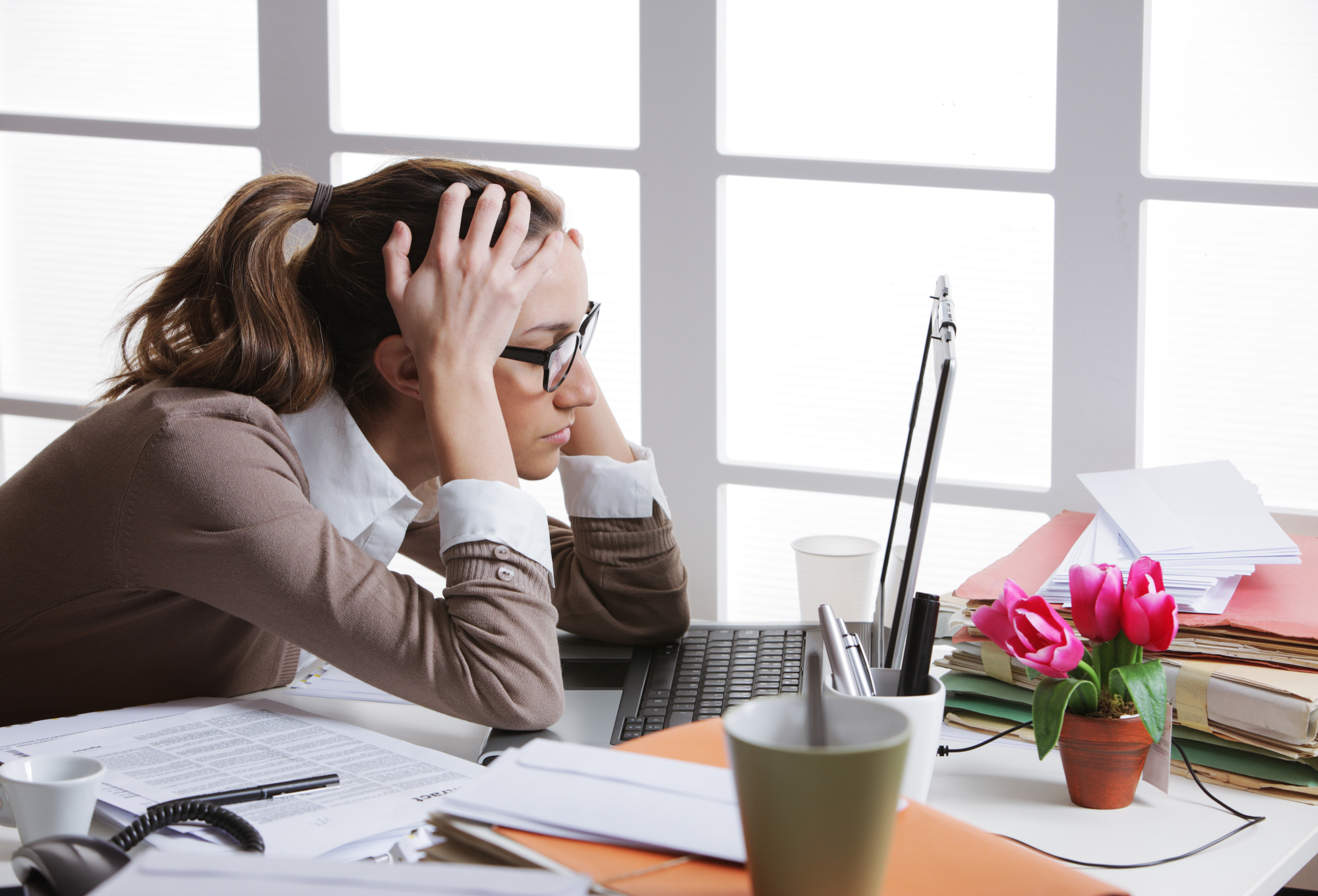Stress is a catch all term for any situation that provokes feelings of pressure, distress, overwhelm and urgency. But what is stressful to me may be totally non-threatening and easy for you. What differentiates whether an event or situation is perceived as stressful depends on how competent you feel to deal with it and whether you have sufficient resources to handle it.
While you’re stressed you may feel panic, anxiety, fatigue and overwhelm. If it lasts long enough, it could wear you down.
Living with chronic stress can lead to burnout, which is a combination of physical fatigue, emotional exhaustion & a decreased sense of efficacy or accomplishment.
In addition to explaining the difference between stress and burnout in this video and infographic, we also summarize the 3 key strategies to burnout recovery used in our workshops and executive programs.
What is burnout?
Burnout is a combination of symptoms that include physical fatigue, emotional exhaustion and cynicism or distancing plus a decreased sense of efficacy or accomplishment. Burnout happens after extended periods of chronic stress and overwork when we have unhealthy or ineffective coping mechanisms.
How can you tell if you’re in burnout?
Take our free quiz to see if stress & overwork has led you to burnout, which is not just feeling tired, but includes an emotional component of cynicism and detachment from your work.
Other common symptoms of burnout include: brain fog, poor sleep, depression, and anxiety.
Burnout is now considered a legitimate medical diagnosis, according to the International Classification of Diseases, or the ICD-11, the World Health Organization’s handbook that guides medical providers in diagnosing diseases. However, burnout only appears in the ICD-11’s section on problems related to employment or unemployment, thus leaving out people who experience burnout as a result of caregiving roles. (Read about how I avoided caregiver burnout here.)
According to the ICD-11 handbook, doctors can diagnose someone with burnout if they meet the following symptoms:
1. Feelings of energy depletion or exhaustion
2. Increased mental distance from one’s job, or feelings of negativism or cynicism related to one’s job
3. Reduced professional efficacy
While the World Health Organization only recently included burnout in their book of disease classification, it has been clinically researched and written about in the medical literature extensively. The first major article by psychologist Herbert Freudenberger was published in 1974. And despite being one of the most widely discussed mental health problems in the world there is no consensus among medical professionals as to how to prevent or treat burnout nor how to predict how long it will take to recover from burnout, most people are given basic advice on rest, self-care, and improving sleep.
What’s the difference between stress and burnout?
 You can tell the difference between stress and burnout because you tend to be:
You can tell the difference between stress and burnout because you tend to be:
- Overreactive and irritable in stress, but disengaged and numb in burnout
- Worried and anxious in stress, but apathetic and cynical in burnout
- Frantically trying to fix things in stress, but discouraged and unmotivated in burnout
- Edgy, amped up, wired & tired in stress, but physically and mentally exhausted in burnout
- Troubled by a racing mind in stress, but suffer with brain fog, reduced cognitive function in burnout
- Sleepless with insomnia in stress, but sleeping excessively without waking up refreshed in burnout
Based on stress rehab hospitals and burnout recovery programs there are 3 keys to healing from burnout.
As mentioned above, there is no consensus among doctors on how to best treat burnout outside of a rehab hospital. Having worked in the recovery and resilience space for 15 years, I’ve seen what works for the majority of people who don’t have the luxury of time, money or availability of a rehab hospital.
We will cover these burnout recovery steps in depth in future articles and podcasts, for now here are 3 concepts to consider.
? Key 1 = Release and let go of the need to do, work, or perform.
Many people think that burnout is only about overwork or being in a toxic work environment. The reality is that not everyone in toxic work situations burns out. Studies show that certain personality traits and behavioral patterns influence our risk of burnout. One such risk factor is a feeling of duty or obligation to perform, even when it’s hurting you. While it’s good to be conscientious, if you don’t establish boundaries and learn to say no while practicing more self-care, you are more likely to have a slow recovery from burnout.
In our Unlearn Burnout Recovery program we teach you how to release yourself from the internal pressure to get back to work before you’ve fully recovered. Also included in your release is a ‘detox’ to stop the brain drain. When we take on too much work we often rely on caffeine or other stimulants to stay awake and energized. These wreak havoc on our brain chemistry and sleep patterns. So we need to detox from them carefully and find better ways to get energy and concentration.
Also included in the Release phase is letting go of toxic relationships and distancing yourself from people who drain your energy and who coerce or motivate you to push beyond your limits in unhealthy ways. Releasing the urge to engage in people-pleasing behaviors or trying to be the savior is important here.
? Key 2 = Replenish the Body’s Building Blocks
Once we’ve detoxed from the substances and food we used to cope with stress and overwork, we often need to build up the body’s resources and building blocks of healthy brain chemicals. Without this step people often think that just taking time off will help them recover only to find that they are easily exhausted and are prone to relapse into burnout again. Research shows that living with chronic stress and burnout impacts the levels of neurotransmitters including dopamine (needed for concentration and motivation), gamma aminobutyric acid (GABA; needed for relaxation and recovery), 5-hydroxy tryptophan (5-HT; needed for mood regulation)
? Key 3 = Reset and unlearn unhealthy coping strategies
To truly recover from burnout we must relearn how to set boundaries, how to practice self-care and how to build resilience. It also involves a reconnection to your essential self so that you learn to live in alignment with your true nature.
We will cover each of the 3 keys in coming videos + podcasts with Helene Philipsen, our partner from Unlearn.
For more insights on building resilience and healing from burnout, check out my books The Top 10 Traits of Highly Resilient People and Holistic Healing.
This post was originally published on In8Vitality.com on December 19, 2020.



